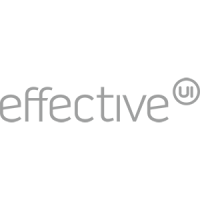EMAIL: denver@worldiaday.org
TWITTER: @wiaddenver
World Information Architecture Day is an annual celebration of the practice, growth, and evolution of Information Architecture. 2017 will mark the second annual Denver celebration of World IA Day, and we'd love for you to join us for this free event!
WHAT TO EXPECT
World IA Day Denver is a full day of talks, discussions, and opportunities to get to know the local information architecture community. Whether or not you have IA in your title, if you're interested in learning more about information architecture, you won't want to miss this free event!
Read on for more details about what the event will entail! You can follow us on Twitter, too, for updates as the day approaches!
REGISTRATION
World IA Day doesn't cost anything, but we do ask people to register so we can gauge what size of an audience to plan for. Register for the event here!
EVENT DATE & TIME
World IA Day is held all across the globe on Saturday, February 18th. The Denver event will run from 9:00 to 4:30pm in downtown Denver at the EffectiveUI offices, followed by an informal community meet up for anyone who wants to keep the IA goodness going.
Venue, parking and transit
EffectiveUI Offices
2162 Market St, Denver, CO 80205, USA
Although the office doesn't have public parking available, there are pretty good options for public transit and pay parking nearby.
Program/Schedule
Venue Opens
Welcome + Opening Remarks
Shelley Cook, lead of the local World IA Day team, will welcome you and introduce the event.
A Service Design Approach to Choreographing Processes and Information – Marc Mueller
A Service Design Approach to Choreographing Processes and Information – Marc Mueller
Today, most companies are recognizing the importance of providing pleasant, helpful, and seamless experiences to their customers. Many initiatives focus on the customers’ point of view in an attempt to optimize the user journey. Often times, these initiatives fail to reach their full potential due their one-sidedness, disregarding the need for the (re-)alignment of internal structures and processes in order to support these improved customer experiences.
This talk gives an introduction to tools from service design that help align the internal processes and information exchanges to properly support a seamless user experience. This talk explains exercises to map the existing ecosystem of support services and backstage systems and identify relationships between different stakeholders. In order to define parameters that help shape information structures for often non-linear experiences, it introduces the principles of world-building, as an extension to the more rigid approach of linear storytelling.
Backstage: How invisible architecture contributes to a ballet dancer’s success
Backstage: How invisible architecture contributes to a ballet dancer’s success – Alicia Raciti
When we think of ballet, we are usually thinking of art and for some people, an opportunity to catch a nap. The world of ballet is architected to allow the dancer to focus fully on their craft instead of the moments, or movement, throughout their day. The nested structure of the day’s activities create an invisible architecture which the dancer relies on for their health and the advancement of their skill and craft.
This invisible architecture has worked so well for the dancers and companies, that it has been applied to all 6 major ballet methods used throughout the world. We will examine what that architecture is and how it has contributed to the success of the dancers.
Takeaways:
- Architecture can contribute to the success of an individual or a group
- A good architecture will be copied and used universally
- Audience receives a new perspective on ballet
Coffee & Snack Break
How Card Sorting Helps You Build People-Centric IA
How Card Sorting Helps You Build People-Centric IA – Natalia Klishina
Anyone who wants to get started in (or get better at) the art and science that is Information Architecture needs to master card sorting. Card sorting sessions, which ask participants to organize topics into categories and name those categories, enable you to creature structures that makes sense to actual users — not just to you or your stakeholder. This talk will cover card sorting best practices, tools you can use for card sorting, the pros and cons of online vs. in-person card sorting, and some lessons I've learned along the way in my 5 years of conducting these exercises for a variety of B2B and B2C clients.
Lunch
Take a break and grab some lunch from one of the restaurants in the neighborhood.
Giveaways from our Global Sponsors
Make sure you're back on time from lunch, for your chance to win a gift from one of the Global World IA Day sponsors!
Developing UX and IA Strategies
Developing UX and IA Strategies – Dean Rizzuto
Gathering and organizing UX and IA research into a cohesive document that can be shared with other team members can be challenging. We’ll discuss the research and the components that make up a UX / IA Strategy and how they can be organized and presented to team members.
Snack break
Goodbye Personas. Hello User Roles
Goodbye Personas. Hello User Roles. – John McRee
Now that the concept of Customer Personas has been co-opted and diluted by nearly everyone that has sat in a 45-minute talk about Design Thinking, we as designers and information architects must ask ourselves, "Do we really NEED Personas anymore?" I say no. Let's either get back to basics or take personas to the next level. Let's make them useful again by applying the fundamental principles of User Roles in order to answer the most important design questions.
This session will cover the fundamental questions that must be answered to create efficient and powerful User Roles. We will also discuss how these might be combined with Personas to create a truly comprehensive understanding of customer goals and needs.
No persona? No product.
No persona? No product. – Janna Moreau
When you're starting a new project it's an exciting experience, it’s a fresh new canvas with infinite possibilities. You start with what seems like an endless amount of questions and ideas going through your head. What valuable features can we add? Remember that unique interaction design we saw on a blog article, what if we used that somehow? How can we develop a great experience for the user, one that will make them eager to come back?
These are all the fun and exciting questions that come with any new project and before getting too ahead of yourself, an important question you should be asking is, who exactly are we building this product for?
Understanding your users will help guide you to build a product or service that feels as if it was made for them. Having the empathy to be able to get into your user's head will help educate you on the different ways they consume information, guiding you through the different steps of designing your product's information architecture.
A technique to create a reliable and realistic representation of those users are the creation of User Personas. Together we will dive deeper into what personas are, why you need them to create a user-centered product, how they help determine your information architecture, and tips on how to create them!
Discussion Groups: Perspectives on Personas
Discussion Groups: Perspectives on Personas
We'll break into groups to talk about the different perspectives we've just heard on personas, and discuss how we use them in our own work.
Closing Remarks
Closing Remarks
We'll wrap up with a quick recap of the day and our thanks for coming out to talk IA!
Informal IA Happy Hour
Informal IA Happy Hour
Join your fellow attendees and head out to one of the local cafes or breweries to keep the IA fun flowing.








